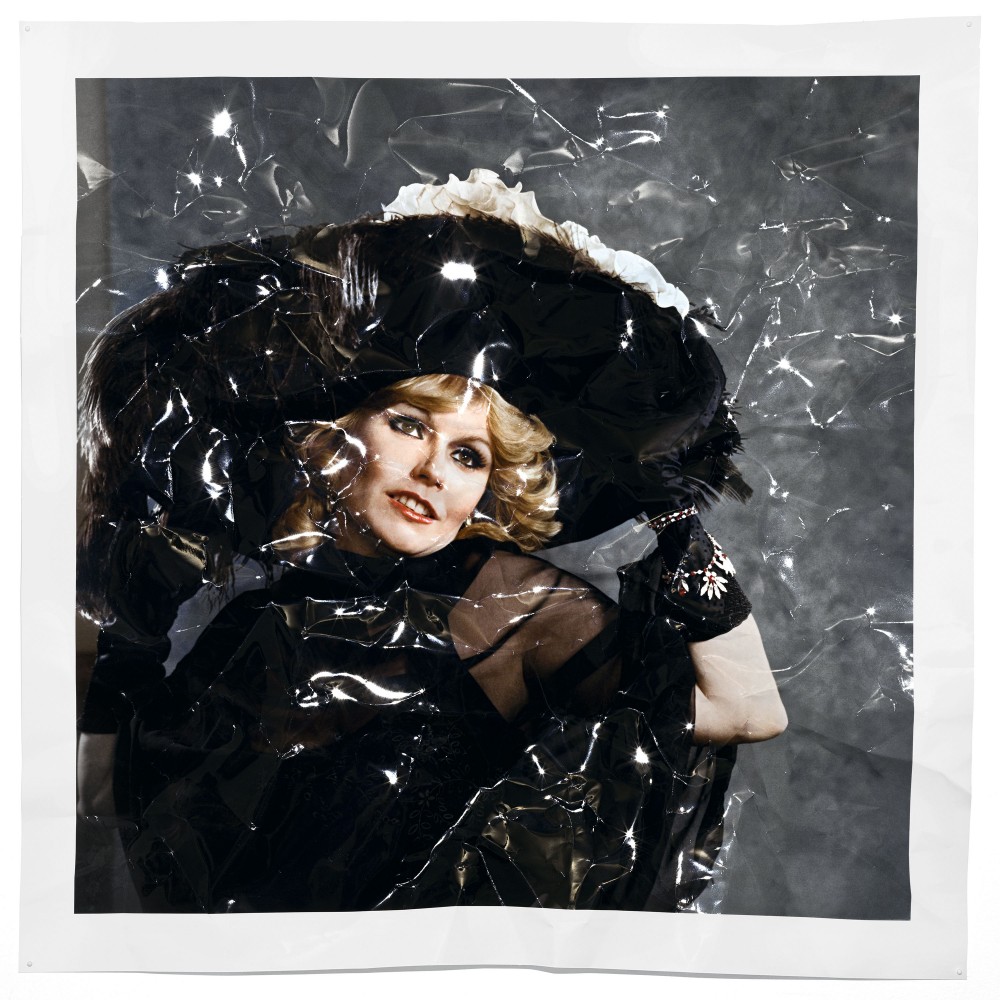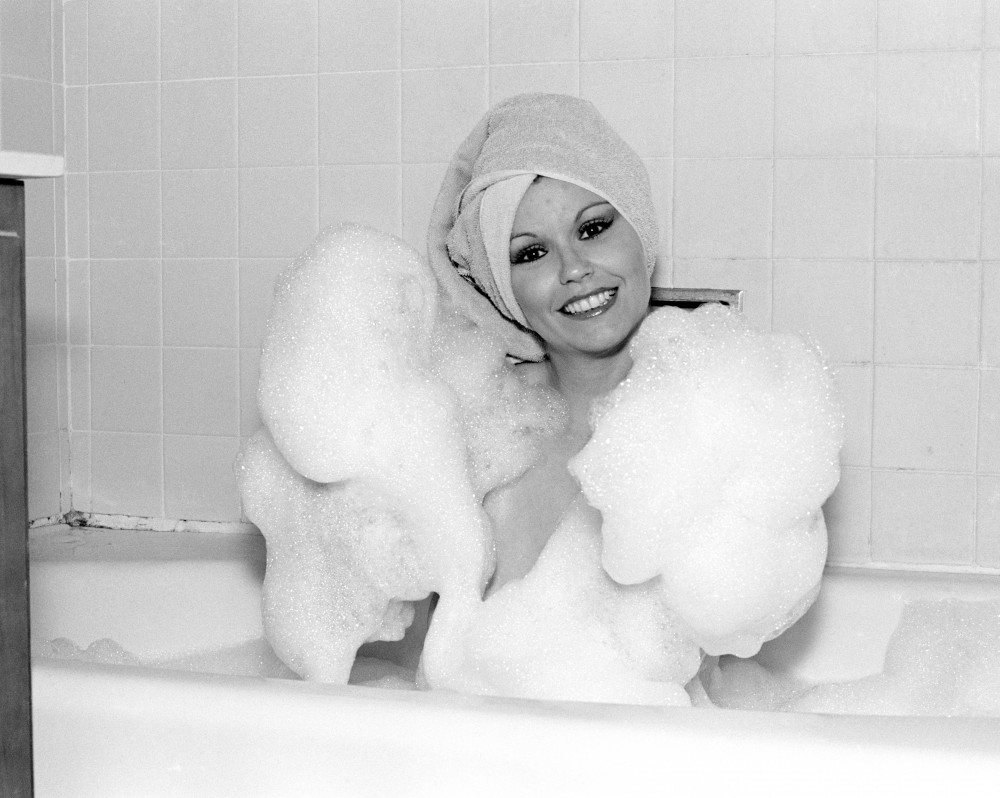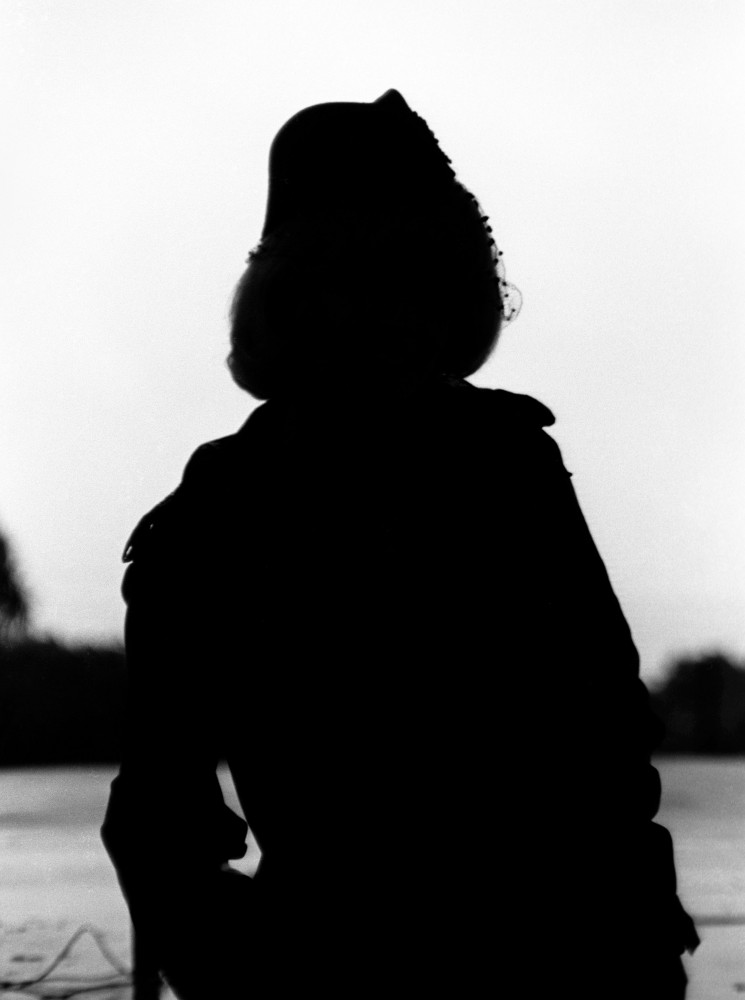AB: You have the Michelle duBois project and the billboard project. They both require a different type of energy and creativity, working with archives and then something that is new and part of a bigger project with other people. What's that like? ZC: Sometimes people get confused about what I do because I do a number of different things, but in an overarching sort of way, the projects come from a similar place. They both deal with the discussion of fantasy, so it made sense when you said I was in the Fantasy issue. Photography lends itself to the confusion of the fantasy/imaginary version of something and the disconnect to what its reality actually is. A lot of the things I think about have at its core the fantasy of construction of selfhood -you’re dealing with a Michelle duBois selfhood and a selfhood of Manifest Destiny of the US.
The projects are very different. One difference between the two is that the Manifest Destiny Billboard Project, done in collaboration with the Los Angeles Nomadic Division, is conceptually complete – how it unfolds is going to be the fun part. The hard creative work, in a way is done, and now it’s more about executing the project, seeing what comes, all these wonderful unexpected responses. It feels much more communal, and it feels more open. The Michelle duBois project was challenging in a very different way. I sometimes have this sense that the project has always been around, and that’s such a fiction, right? The truth is that artists struggle to work through a ideas and inspirations. It’s a creative process to figure out the things you’re interested in, and how to manifest them aesthetically and conceptually and historically. I feel like that type of engagement is so dynamic but also quite stressful. It was exciting because I had the question but didn’t have the answer. And often when things become more successful, the speed suddenly shifts. It’s not that I was working in obscurity, I had been working quietly for a number of years on the duBois project. But the work really hit its stride starting around 2010, and suddenly everything moved much more quickly and I had to figure through things creatively at a faster rate. I only now have time for reflection.

AB: When I’m looking at the Michelle duBois project, what exactly am I looking at?
ZC: It depends on where in the stage of the project you are looking. As each step and stage unfolds, you are looking at different things that I was thinking through, and the questions in photography that I was playing out. If you were looking at work from 2008 you are looking at how things are collected and categorized. Sometimes they include manipulated original documents or original photographs from the archive. For instance, there is The Polaroided Series, literally a series of polaroids of her at the same bar with ten different men where I just black out the men. Later aspects of the work deal with greatly manipulated material aspects or obfuscation of the archive, with images that are separated and far removed from the initial reference. Often repetition is a big part of my practice.
AB: Were the polaroids archival photographs or something else?
ZC: The actual polaroids are from her collection, but I manipulated these particular ones. That was one of the few sub-series where I included original images. Polaroids are also included in the Grrrr series, a work that concentrates on her obsession with the tiger print; tigers on the wall, images of her wearing a tiger blanket, riding a tiger statue, polaroids of her wearing a tiger shirt, etc. Some were original from her archive but most were pieces that I created, from her quote-unquote “archive.” Her original archive was a complete disaster zone, not really an archive at all, more an accumulation of negatives, polaroids, contact prints, slides, photo albums, immaterialness that had no rhyme or reason, and all of which fit into a couple boxes, hidden under beds and behind cupboards.
AB: What attracted you to her?
ZC: I was given these photographs when I was twenty-two and I didn’t do anything with them for a number of years. Then I realized that the images have this casual 70s snapshot aesthetic that I was interested in anyway. On top of that they were photographs of someone that kind of looked like me, when I was younger, and at certain moments I really did look like her! There was a deep confusion that I played with and took to a much broader professional level, confusing the conversation around the project to the point that people are still unsure as to whether or not I have made duBois up entirely.
What I really respect about duBois (that is one of her five aliases, by the way), is that she completely dictated the terms of her own fantasy life. I’m as feminist as I possibly can be without going out and burning bras! But duBois had a very feminist trajectory. I’m not interested in judging how she lived her life, which is questionable to some people. But I am interested in how she wanted to present this fantasy image of herself. She dictated her own terms at a cultural and historical moment when it wasn’t easy to do from where she was from. She was from Oklahoma, a small town. She was married twice to young guys, young Okies, and all she wanted to do was see the world. She had a passion for traveling, which totally falls into this manifest destiny promise I am obesseing over right now. I like how she dictated the terms of her own world. She did it photographically at the time, and people forget how expensive it was to actually and physically do so. What is important is that she dictated the planning, execution and critically, the keeping of these images of herself, what I call ‘Auto-Portraits.’

AB: You did look alike. How much did that play into it?
ZC: I don’t think I understood how profoundly I looked like her until I was continually told so, and realized that is an element to play up. I think we look pretty different – I know exactly what I look like and what she looks like, but if you look quickly at a photograph we do look similar. Because the archive covers such a long time span, ranging from when she was sixteen to thirty-six years old, a lot changes in how she looks over time. Actually an amazing part of the archive is just how much she transforms her physical self, how unrecognizable she is from one set of images to the next – a blonde here, a red head here, etc.
But these questions of our looking so alike, confusing the audience about who is who and what is what, opens the door to larger issues of appropriation and ownership and is this mine or hers? One reason it took a while to work through the project is that I needed to ethically figure my way through these questions with her, which I have. Importantly, I pay her a portion of what I earn from each work that sells.
AB: How do you feel about fundraising?
ZC: There is a strange, uncomfortable and unspoken aspect of the art world; a lot of people come from wealth, and don't need to work outside of their practice. Luckily while at CalArts I received the amazingly generous Liberace scholarship, a full ride. And to be honest, as someone who does not come from extraordinary wealth, I’m not sure if I would not have agreed to be $60,000, $90,000 in debt to go to graduate school.
I also learned early on that there are collectors and patrons who support young artists as part of their involvement in the arts. The inextricable dynamic between money and the art world is very confusing to me, in part because there is such great and overwhelming wealth. With experience, I have grown to take a much more strategic approach to the access that the art market provides in order to help make my work. I don't shy away from these opportunities when they present themselves as I may have when I was younger.

AB: What are the biggest lessons you brought with you from your MFA education from CalArts? How important is graduate school, aside from the fact that you can accummulate tremendous debt?
ZC: What you get out of grad school depends on when you go and who is there when you go. When I went to CalArts I had no art theory background and I chose CalArts, a more liberal and theoretical school, because I knew that was what I lacked. Art can be complicated because it’s such an instinctual reaction and yet one that is quite constructed. I do find that a lot of people are scared off by the intellectual bullies in grad schools, but ideally you want to have someone see your work differently and understand it, to be exposed to someone who helps you understand how your work exists in a historical context. Most important is to find someone to help you learn to hold your own, in every way. I was extremely lucky to be there during the Michael Asher and Alan Sekula years.
AB: Where are you at right now with your work? What would you like to convey using photography as your medium?
ZC: The fictional image, the fiction of the image, presumption of the image, the fiction of documentary, the presumption of history. Taking an idea and applying a satellite approach to it. I’ve been thinking about the process of witnessing, repetition, expansion, iterations, rephotographing – how memories materially interrupt the photograph. How these different levels of interruption, not for the sake of collapsing, have a liberating affect on the medium. How mediumness has changed, how The Image and The Photograph are now totally separated. People are pushing photography differently than they used to, it’s exciting, they are no longer confined to invisible material rules.
AB: Can you share what your personal fantasy is at the moment?
ZC: To live in Paris! And to paint giant epic paintings! although not necessarily at the same time. But I was recently in Paris with Alexandra Grant, a fellow Los Angeles-based artist and friend, collaborating with her on a show she had at The Musee d’Orsay. It was based on this wonderful project at 18th Street in Santa Monica she had previously done, inviting people to come paint with her. She had asked me to participate and finally the last day of the participation of the exhibition, at the very last moment, I showed up. She gave me a palette and some text to paint and I sat there and I felt completely and surprisingly liberated. I loved it so much, they had to kick me out.

